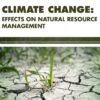Drainage of agricultural lands is an instrument for production growth, a safeguard for sustainable investment in irrigation and a tool for conservation of land resources. In global terms, drainage in the developing countries is still far of being adequate or sufficient. Subsurface drainage is a form of drainage that was widely introduced in Europe and North America in the twentieth century. In the developing countries, Egypt stands as the country with largest area provided with subsurface drainage (about 2.5 million ha). Countries such as Pakistan, China, Turkey and India however are also providing subsurface drainage to large tracts of their irrigated lands. The world experience in subsurface drainage over the past decades provide a wide range of lessons learned and offers great opportunity to identify best practices. Although the technological advances and the scientific research offered a lot of innovations to subsurface drainage, organizational and institutional aspect of drainage project proved to be equally important for achieving the development objectives. This book focuses on the construction process of subsurface pipe drainage systems. It includes a discussion of planning, organization, and installation techniques and contains guidelines and relevant information for improving the quality of drainage installation.













